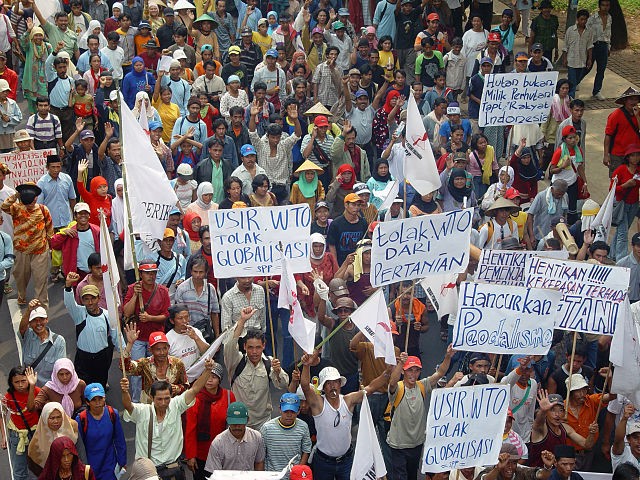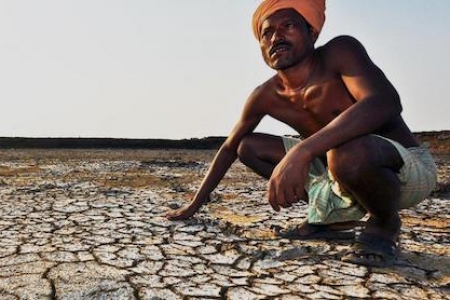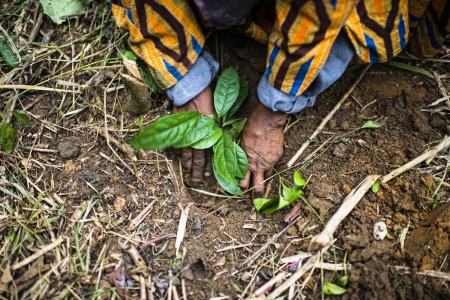For most Westerners, the idea of common lands conjures up images of English village greens or abandoned wasteland. But in much of the developing world, they are the lifeblood of hundreds of millions of people, sources of sustenance and spirituality, of wealth and welfare.
The commons have been under threat for decades from state control and privatization. Land grabbing by agribusiness and mining has escalated in the past decade. From the pastures of sub-Saharan Africa to the forests of Latin America and the mountains of southeast Asia, it is the unfenced commons that have most often been at risk from a growing tide of international investment in land.

But now there is a fightback. In September, NGOs representing a broad coalition of rural communities, including indigenous peoples, met in Bern, Switzerland, to discuss a global call for action on customary land rights. The aim of the call, which will be publicly launched in the New Year, is to double the land area recognised as collectively owned or controlled by rural communities by 2020.
Protecting and reasserting the commons is of course partly about access to land as a human right. But the movement is gaining support from people who are increasingly confident in claiming that it is also the best way of securing conservation of landscapes and biodiversity, and often of achieving peace, economic development and food security, too.
Overturning “green grab”
When conservationists at the World Resources Institute and land rights activists at the Rights and Resources Initiative (RRI), a Washington-based co-convenor of the Bern conference, reviewed 130 studies of community forests from all round the world last year, they found that those forests usually suffer less deforestation, and store more carbon, than equivalent state-protected areas.
The growing belief among conservationists that indigenous communities can be the best custodians of forests will give energy to debates on land rights and common tenure planned for the Global Landscape Forum at the COP 21 UN climate change conference in Paris in December. A series of sessions organised by CGIAR institutes, aid agencies, conservation groups and land rights activists will discuss how collective land rights are often the best means of protecting forest carbon sinks.
In Paris, indigenous peoples’ groups will be calling for part of the Climate Fund to be assigned specifically to them. The Fund will help developing countries mitigate and adapt to climate change. Meanwhile, a slew of conferences during 2016 are set to debate the future of the commons, including sessions at the World Bank’s annual land and poverty conference in Washington, D.C. in March.
Some 1.5 billion people worldwide are estimated to live on communal land and use natural resources that are managed communally. They include about 370 million indigenous people. But their claims to customary rights are widely ignored.
Closing the land gap
A study published in Bern by RRI found that while 18 per cent of the world’s land area is recognised by governments as owned or controlled by local communities and indigenous peoples, only half of that area is actually under direct communal control.
This contrasts with the established claims of the local communities to 65 per cent of their land as their customary land under common law. Even doubling their land rights would only go part of the way to settling their claims.
Efforts by communities to protect and reclaim their customary lands regularly result in bloody conflicts. In Nicaragua, at least nine Miskito people were killed and a hundred injured in September in land conflicts triggered by organised invasions of farmers onto their lands. This happened within days of three anti-mining protesters being shot dead by police at a proposed copper mine on customary lands in Peru.
From Russia to Bangladesh, those defending their lands are called terrorists and foreign agents. There is, says RRI’s coordinator Andy White, "a catastrophic failure of governments to respect the basic land rights of more than 1 billion people". He calls insecurity over land “a ticking time bomb for the world”, threatening peace, efforts to reduce poverty and the fight against climate change.
The campaign is gaining allies. The Bern conference, which called on sympathetic organizations to sign up to its global call, heard support from conservation grounds more usually seen as “green grabbers”, such as Conservation International, and from food corporations with large land footprints, such as Nestle.
Corporate risk and customary land rights
Corporations increasingly recognise that land disputes are a growing risk to their investments, as opponents tear down their fences, blockade their mining projects and muddy the names or brands linked to land grabs. “The frequently-made assumption that land without clear ownership is uninhabited is a dangerous recipe for any kind of natural resources-based development,” says White. In Bern, a group of companies convened by RRI launched a guide for businesses who want to respect land and forest rights.
In law too, progress is being made. India’s 2006 Forest Rights Act means that no one can take land from communities in tribal areas without their approval. Such land is “an imperishable endowment”. In Brazil, a fifth of the Amazon is now established as indigenous territories, with measurable environmental gains. Liberia has new progressive land law that automatically recognises communal land rights.
In Indonesia, the reformist administration of Joko Widodo is acting on a legal ruling that annuls previous government claims on community forests. It should eventually allow indigenous groups and others to assert control over as much as 40 million hectares.
But too often such rights, even when enshrined in law, are trumped by competing commercial claims and government diktats. In the Democratic Republic of Congo, a 2014 declaration recognizing community land rights is being overturned by a new forest law. In Kenya, new legal recognitions on land rights have not prevent mass evictions of forest-dwelling Ogiek and Sengwer people.
Community forests with a long traditional of successful conservation are under attack in Nepal. In Peru -- once a leader in asserting traditional rights of indigenous people -- there has been no new legal community titling for ten years, as oil prospectors and miners have staked their claims to land long held by communities under customary laws. Even in Brazil, the National Congress is pushing back against indigenous control of land.
Common land rights are increasingly being recognized not as relics of the past but as models for future management of large areas of the planet. But the gap between rhetoric and reality is as stark as ever.











